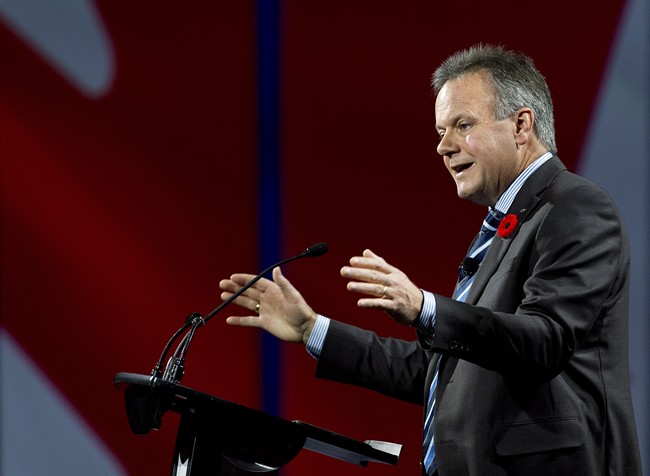Bank of Canada governor Stephen Poloz says he and his fellow central bankers see a “broadening recovery” taking root – leaving room for sooner-than-expected hikes in interest rates, some suggest. But the Bank is standing pat for now.

“Canada’s economy is showing signs of a broadening recovery,” the bank said in a statement on Wednesday.
“Stronger exports are beginning to be reflected in increased business investment and employment,” the bank said. “This suggests that the hoped-for sequence of rebuilding that will lead to balanced and self-sustaining growth may finally have begun.”
Translation: businesses are beginning to post better growth (thanks to a strengthening U.S. economy) and are hiring more — key developments since consumers, and more specifically their credit cards, won’t be able to prop up the economy for much longer.
MORE: In wake of hiring boom, Canadians confident in job prospects
Yet in its interest-rate announcement Wednesday, the central bank justified keeping rates on hold in part because of those high household debt loads, as well as sliding oil prices; things are still fragile.
The “balance of risks” in the bank’s language, points to maintaining its trend-setting rate at 1 per cent, a rate it hasn’t budged from since September 2010.
Catch-22
The bank’s ultra-low lending rate has helped keep rates from commercial lenders at historic lows, fueling higher debt loads for Canadian consumers and homeowners who have taken advantage of the low-rate environment and borrowed to the hilt. Fresh figures out Wednesday show consumer debt levels continuing to rise.
MORE: Here’s the ‘worrisome’ amount of debt Canadians owe on their stuff
That leveraging process may not moderate or reverse itself until rates head higher, making borrowing more costly. But that requires better economic conditions, experts suggest, something that’s eluded Canada and Poloz since he became governor early last year.
Earlier rate hike?
Experts anticipate the economy being in good enough shape for the Bank of Canada to start lifting its key rate late next year. But the improving backdrop is suddenly setting the stage for an earlier hike, some suggest.
MORE: Canada’s economy is growing faster than expected. Here’s why
The unemployment rate has dipped to 6.5 per cent and the pace of economic growth has climbed to 2.8 per cent — half-a-percentage-point better than the bank had expected.
Fresh figures have also pointed to a faster-than-anticipated growth for inflation, which suggests the economy is gathering pace. With its own head of steam, the economy may not need lower rates for much longer.
Reason for pause
Still, lifting rates sooner will still put pressure on highly leveraged households, with some perhaps struggling to pay down elevated debt loads that will carry higher interest. Central bankers will want to absolutely certain stable job and wage growth are being stoked before lifting borrowing costs.
The bank acknowledged Wednesday that inflation had climbed faster than expected, but it described the increase as “temporary effects” of a lower Canadian dollar and price jumps in certain consumer sectors, such as telecommunications and meat.
MORE: Here’s what’s in store for supermarket prices in 2015
Weaker oil prices pose a downside risk to the economy, while household “imbalances” – read: high debt loads – present a risk to financial stability.
“Overall, the balance of risks remains within the zone for which the current stance of monetary policy is appropriate,” the Bank of Canada said.




Comments